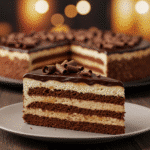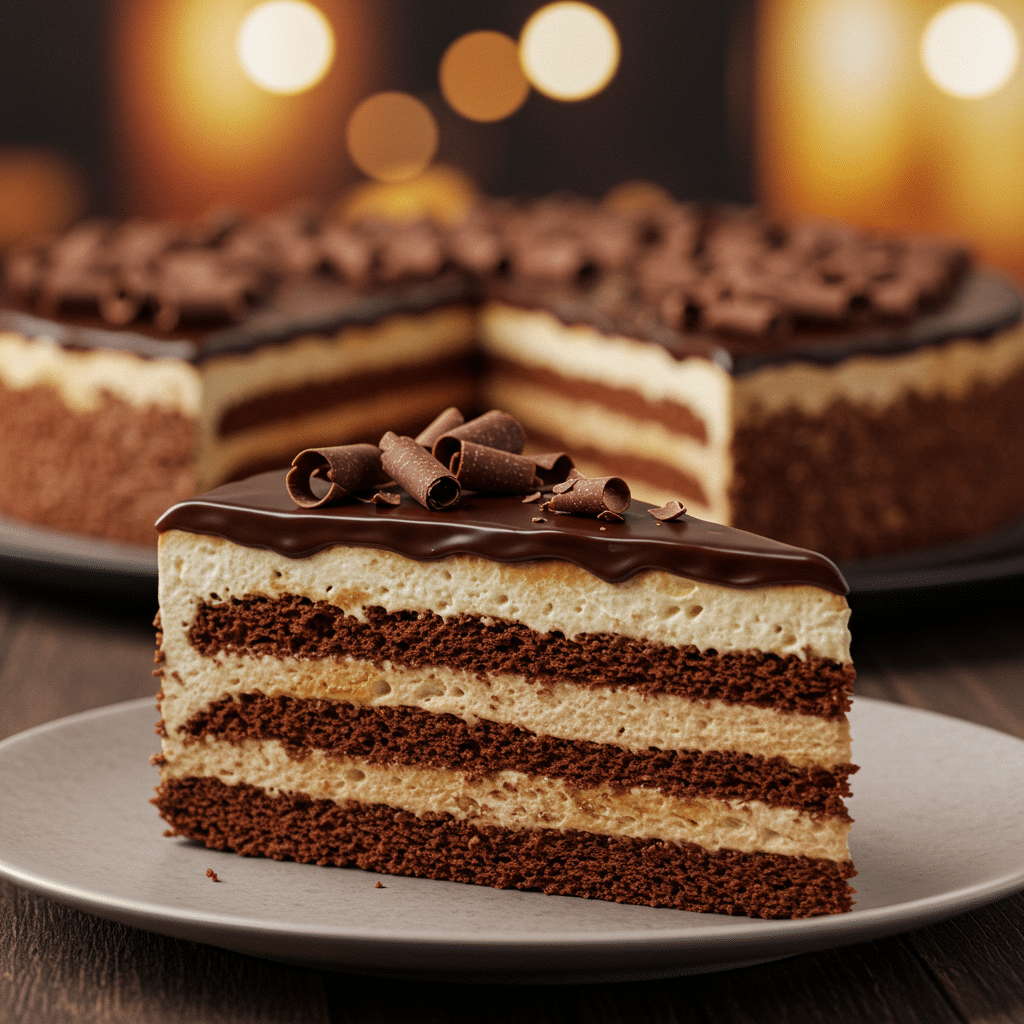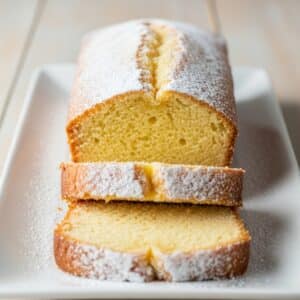The Chocolate Coconut Cake Recipe blends two beloved flavors into one indulgent dessert. Chocolate brings richness and depth, while coconut adds tropical sweetness and texture. Together, they create a cake that feels both familiar and exotic, offering layers of moist crumb, fragrant coconut, and satisfying chocolate notes. It’s the kind of recipe that works equally well for casual gatherings or formal celebrations, thanks to its impressive flavor and adaptable style.
At the heart of this cake is a balance of ingredients that ensure both flavor and texture. Cocoa powder provides chocolate intensity, while shredded coconut gives contrast and chewiness. Full-fat coconut milk boosts richness, keeping the cake moist and adding subtle nuttiness. Optional coffee deepens the chocolate flavor, making it more complex without overpowering the coconut.
🧾 Want to keep this recipe for later? Download your printable PDF version now and enjoy it anytime!
📥 Download Recipe PDF✅ Print-friendly • 🕒 Save for later • 📱 Mobile-accessible
💡 Want more like this? Subscribe to our weekly printable recipes!
This article explores every detail of the recipe, from ingredient breakdowns and step-by-step preparation to texture tips, serving suggestions, and nutritional notes. You’ll also find storage advice, creative presentation ideas, and a detailed FAQ to answer common baking questions. Whether you’re a beginner looking for a simple but rewarding bake or an experienced baker wanting a crowd-pleaser, this cake promises satisfaction in every slice.
Why Bake a Chocolate Coconut Cake
A Fusion of Comfort and Tropics
Chocolate cake has long been a classic, while coconut desserts bring a tropical flair. Combining the two results in a cake that feels decadent yet refreshing. The richness of cocoa pairs perfectly with the nutty sweetness of coconut, making each bite balanced and flavorful.
Versatile for Any Occasion
This cake works for birthdays, holidays, or even weeknight baking projects. Its adaptability allows for simple presentations dusted with powdered sugar or lavish finishes like ganache and buttercream. Much like the Ultimate Chocolate Cake Recipe, it transitions easily between casual comfort food and elegant celebration centerpiece.
Print
Chocolate Coconut Cake Recipe
- Total Time: 55 minutes
- Yield: 12 servings 1x
- Diet: Vegetarian
Description
This Chocolate Coconut Cake Recipe blends rich cocoa with tropical coconut for a moist, flavorful dessert. Shredded coconut, full-fat coconut milk, and a hint of coffee make this cake tender, fragrant, and unforgettable. Perfect for birthdays, holidays, or casual family gatherings.
Ingredients
1 ¾ cups all-purpose flour
¾ cup unsweetened cocoa powder
1 ½ tsp baking powder
1 tsp baking soda
½ tsp salt
1 cup full-fat coconut milk (canned)
½ cup vegetable oil or melted coconut oil
1 ½ cups sugar (white or coconut sugar)
2 large eggs
1 tsp vanilla extract
1 cup shredded or desiccated coconut
Optional: ½ cup strong brewed coffee
Instructions
1. Preheat oven to 350°F (175°C). Grease and line two 9-inch round cake pans with parchment paper.
2. In a large bowl, sift together flour, cocoa powder, baking powder, baking soda, and salt.
3. In a separate bowl, whisk coconut milk, sugar, eggs, oil, and vanilla extract until smooth.
4. Gradually add dry ingredients into wet mixture, stirring until just combined.
5. Fold in shredded coconut and optional coffee if using.
6. Divide batter evenly between pans and smooth the tops.
7. Bake for 30–35 minutes, or until a toothpick inserted in the center comes out clean.
8. Cool in pans for 10 minutes before transferring to wire racks.
9. Frost with coconut buttercream, chocolate ganache, or whipped cream once completely cooled.
Notes
Optional: Toast the shredded coconut for extra crunch and flavor.
Adding brewed coffee deepens the chocolate flavor without making the cake taste like coffee.
Unfrosted layers can be frozen for up to 3 months. Thaw overnight in the refrigerator before decorating.
Pairs well with tropical fruits like pineapple or mango on the side.
- Prep Time: 20 minutes
- Cook Time: 35 minutes
- Category: Dessert
- Method: Baking
- Cuisine: American
Nutrition
- Serving Size: 1 slice
- Calories: 320
- Sugar: 26g
- Sodium: 210mg
- Fat: 15g
- Saturated Fat: 9g
- Unsaturated Fat: 5g
- Trans Fat: 0g
- Carbohydrates: 42g
- Fiber: 3g
- Protein: 5g
- Cholesterol: 45mg
Key Ingredients for Flavor
Core Cake Elements
Flour provides the base structure, while cocoa powder delivers deep chocolate flavor. Baking powder and baking soda ensure the cake rises evenly, creating a fluffy crumb. Salt balances sweetness, highlighting the cocoa’s richness.
Coconut’s Role
Coconut appears in multiple forms: milk adds creaminess and moisture, shredded coconut brings chewiness, and oil complements the nutty undertones. These ingredients don’t just provide flavor, they also help maintain a tender texture that keeps the cake satisfying without heaviness.
Step-by-Step Baking Instructions
Preparing the Batter
Preheat your oven to 350°F (175°C). Grease and line two 9-inch pans with parchment. Sift together flour, cocoa, baking powder, baking soda, and salt to eliminate clumps. In a separate bowl, whisk coconut milk, sugar, eggs, oil, and vanilla until smooth. Gradually fold dry ingredients into wet, mixing gently until combined. Stir in shredded coconut and optional coffee to enhance chocolate depth.
Baking the Cake
Divide batter evenly between pans, smoothing tops for consistent layers. Bake 30–35 minutes, or until a toothpick comes out clean. Cool cakes in their pans for 10 minutes before transferring to a rack. Let them cool completely before frosting with coconut buttercream, chocolate ganache, or whipped cream. Proper cooling ensures stable layers and clean slices.
Tips for Achieving the Perfect Texture
Mixing Techniques
Creaming isn’t necessary for this recipe, but blending ingredients thoroughly ensures smoothness. Avoid overmixing once flour is added to prevent gluten development, which could make the cake dense. Using room-temperature eggs and coconut milk helps batter combine evenly.
Baking Strategies
Check the cakes a few minutes before the suggested time, as ovens vary. The top should spring back when lightly pressed, and a toothpick should come out clean. Cooling is critical — transferring too early may cause breakage, while leaving cakes too long in pans may create soggy edges.
Creative Serving Ideas
Simple and Elegant
Serve the cake plain with a dusting of powdered sugar for a minimalist approach. Pair slices with a scoop of coconut ice cream or drizzle with melted chocolate for a more indulgent presentation. Fresh berries on the side add brightness and balance.
Layered Indulgence
Turn the cake into a showstopper by layering with coconut buttercream or chocolate ganache. Add toasted coconut between layers for crunch and contrast. For extra flair, sprinkle cocoa powder or edible flowers on top. This transforms a simple dessert into a centerpiece suitable for special occasions.
Storage and Freezing
Keeping It Fresh
Store the cake in an airtight container at room temperature for up to three days if unfrosted. If frosted with cream-based toppings, refrigerate and bring to room temperature before serving. Proper wrapping prevents the cake from drying out.
Freezer-Friendly Option
Freeze unfrosted cake layers by wrapping tightly in plastic and foil. They keep well for up to three months. Thaw overnight in the refrigerator before frosting and serving. This approach allows bakers to prepare ahead, ensuring a stress-free experience on event days.
Nutritional Insights
Indulgence with Balance
Chocolate coconut cake is indulgent, but coconut milk provides beneficial fats while cocoa offers antioxidants. In moderation, it can be part of a balanced lifestyle. A small slice delivers satisfaction without overindulgence.
Mindful Variations
Use coconut sugar for a slightly lower glycemic index and caramel-like flavor. Swap vegetable oil for melted coconut oil to increase healthy fats. Lighter frostings, like whipped cream instead of buttercream, reduce calories while preserving indulgence. These small changes make the cake more adaptable to personal dietary goals.
Frequently Asked Questions
Can I use sweetened shredded coconut instead of unsweetened?
Yes, sweetened shredded coconut works just fine, though it will make the cake noticeably sweeter. If you use sweetened, it’s a good idea to reduce the sugar in the batter by about ¼ cup to prevent the overall dessert from becoming too rich. Unsweetened shredded coconut gives you more control over the flavor balance, but sweetened adds a lovely caramelized chewiness that pairs well with chocolate. Either option works, depending on your preference for sweetness.
Can I substitute almond milk or another plant-based milk for coconut milk?
You can substitute almond milk, oat milk, or soy milk for coconut milk, but the cake will lose some of its tropical richness. Coconut milk provides not only moisture but also a subtle nutty flavor that enhances the shredded coconut. Plant-based alternatives will still keep the cake soft, though almond milk makes it slightly lighter and oat milk adds creaminess. If you’re aiming for the deepest coconut flavor, stick with canned full-fat coconut milk.
Do I need to include the optional coffee in the recipe?
No, the coffee is completely optional, but many bakers swear by it because it deepens the chocolate flavor. Coffee enhances cocoa’s natural bitterness in a way that makes the chocolate taste richer without actually adding a coffee flavor to the cake. If you’re worried about caffeine, you can use decaf coffee and still get the same flavor benefits. Leaving it out won’t ruin the recipe, but including it will make the chocolate shine.
What frosting pairs best with this cake?
The frosting you choose depends on the flavor balance you want. Coconut buttercream emphasizes the tropical flavor, while chocolate ganache doubles down on richness. Whipped cream offers a light, airy alternative that prevents the cake from feeling too heavy. Cream cheese frosting provides tanginess that balances the sweetness beautifully. Each option works, but if you’re serving the cake at a formal occasion, ganache creates a luxurious finish, while buttercream or whipped cream are excellent for casual gatherings.
Can I make this cake gluten-free without affecting flavor?
Yes, you can bake this recipe gluten-free by replacing the all-purpose flour with a gluten-free blend. Look for one that already includes xanthan gum or add your own for structure. The cake may turn out slightly denser, but the combination of coconut milk and shredded coconut helps retain moisture and flavor. Some bakers also recommend combining almond flour with gluten-free flour to add a nutty dimension. The result is still delicious, just with a slightly different texture.
Conclusion
The Chocolate Coconut Cake Recipe proves that blending classic and tropical flavors results in a dessert both indulgent and memorable. Cocoa delivers richness, while coconut adds sweetness, texture, and a hint of nuttiness. Full-fat coconut milk ensures moisture, while optional coffee deepens complexity. Together, these ingredients create a cake that satisfies cravings and impresses guests.
Its versatility makes it suitable for nearly any occasion. Whether served plain with a light dusting of sugar, layered with ganache, or topped with coconut buttercream, it adapts beautifully to casual family dinners or grand celebrations. Storage and freezing tips make it practical, while mindful ingredient swaps allow for balance without sacrificing indulgence.
Like many beloved cakes, this recipe is about more than taste — it’s about creating moments. Each slice offers warmth, comfort, and a touch of tropical flair. Bake it once, and it will likely join your collection of go-to recipes, ready to delight friends, family, and anyone lucky enough to try it.




